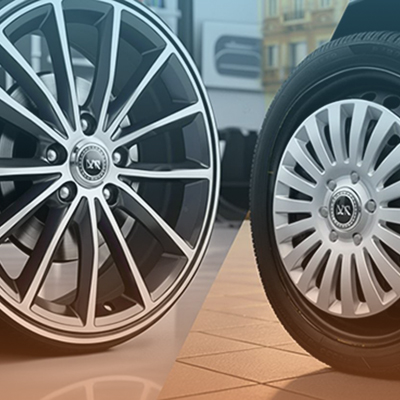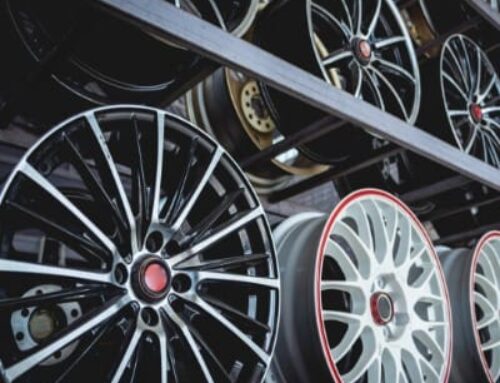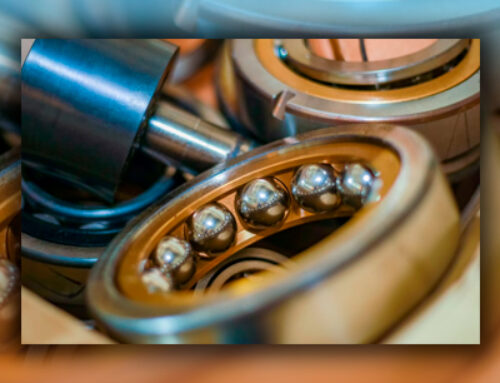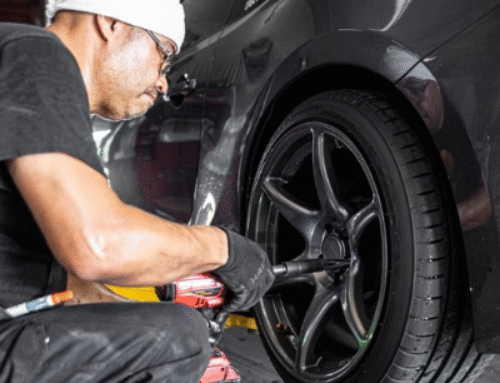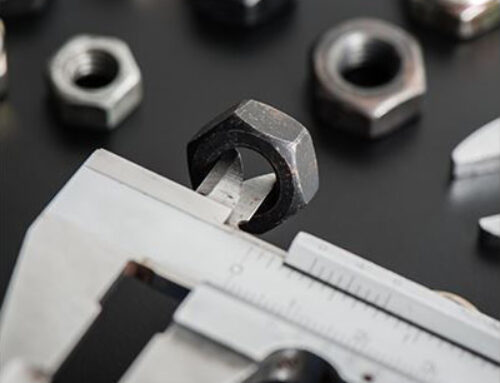Cap Wheel Cover vs. Hubcap: What’s the Difference and Why It Matters
When it comes to vehicle wheels, many people use the terms cap wheel cover and hubcap interchangeably. But did you know they’re actually not the same thing? Understanding their differences can help you make better decisions for both style and protection.
In this article, we’ll break down exactly what a cap wheel cover is, how it differs from a hubcap, and why choosing the right one matters for your car’s performance, appearance, and maintenance.
What Is a Cap Wheel Cover?
A cap wheel cover is a decorative and protective component that fits over the entire face of the wheel. It’s often made from durable plastic or metal and is designed to give your wheels a clean, stylish appearance while protecting them from dust, moisture, and debris.
Modern cap wheel covers often mimic the look of alloy or premium rims, making them an affordable way to upgrade your vehicle’s look without replacing the entire wheel.
Key features of cap wheel covers:
-
Covers the full surface of the wheel
-
Commonly used on steel wheels
-
Easy to install and remove
-
Offers protection from scratches and dirt
-
Enhances the aesthetic of your vehicle
What Is a Hubcap?
A hubcap, on the other hand, is a smaller cover that typically only protects the center area of the wheel—where the lug nuts are located. Hubcaps were traditionally made of metal, but modern versions can also be plastic.
Hubcaps serve a more functional than aesthetic role, though many also add a subtle touch of style. They help protect critical components from rust and corrosion while keeping the wheel center clean.
Key features of hubcaps:
-
Covers only the center portion of the wheel
-
Originally common on older vehicles
-
Provides basic protection for lug nuts and bearings
-
Simple, minimal design
Cap Wheel Cover vs. Hubcap: The Key Differences
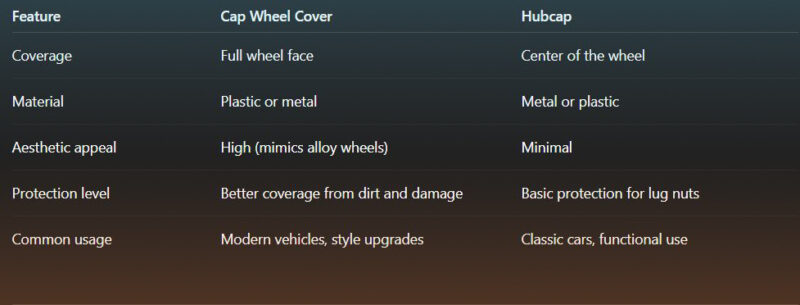
Why the Difference Matters
Choosing between a cap wheel cover and a hubcap isn’t just about looks. It also affects how well your wheels are protected, how easy maintenance is, and the overall impression your vehicle makes.
-
Protection: Full wheel covers provide better shielding from road debris, brake dust, and weather.
-
Maintenance: Hubcaps are simpler and often easier to replace individually if damaged.
-
Aesthetics: Wheel covers can give an instant style boost without a high price tag.
-
Fitment: Not all wheels are compatible with both, so knowing your wheel type matters.
When to Choose a Cap Wheel Cover
-
You want to improve the visual appeal of your car without buying expensive rims.
-
Your vehicle has steel wheels, and you want to cover them completely.
-
You prefer added protection from daily wear and tear.
-
You’re looking for an easy and affordable upgrade.
When to Choose a Hubcap
-
You prefer a classic or minimalist look.
-
Your car already has styled steel wheels and just needs center protection.
-
You want something easy to replace if lost or damaged.
-
You’re not concerned about covering the entire wheel face.
Installation and Maintenance Tips
-
Check fitment carefully: Cap wheel covers must match the wheel diameter and clip securely.
-
Clean regularly: Wipe down with mild soap and water to maintain shine and prevent corrosion.
-
Inspect clips or fasteners: Damaged clips can cause covers to pop off while driving.
-
Avoid harsh chemicals: These can discolor or weaken the material over time.
Cost Comparison: Cap Wheel Cover vs. Hubcap
-
Cap Wheel Cover: $40-$150 per set (depending on design and material)
-
Hubcap: $20-$80 per set (more affordable, but less coverage)
While hubcaps are typically cheaper, cap wheel covers offer more protection and a modern look, making them a popular choice for many drivers.
FAQ: Cap Wheel Cover vs. Hubcap
✅ Are cap wheel covers the same as hubcaps?
➡️ No. Cap wheel covers cover the entire wheel face, while hubcaps only cover the center area.
✅ Do cap wheel covers fit all wheels?
➡️ No. They’re typically designed for steel wheels and may not fit properly on alloy rims.
✅ Are cap wheel covers durable?
➡️ Yes, most are made of durable plastic or metal. However, they can crack or come loose if hit.
✅ Can I install cap wheel covers myself?
➡️ Yes. Most snap into place or use retention rings, making installation simple with basic tools.
✅ Which is better for my car—hubcaps or cap wheel covers?
➡️ It depends on your goals. For full coverage and style, go with wheel covers. For simple protection, hubcaps are sufficient.
Understanding the difference between a cap wheel cover and a hubcap can help you make the right choice for your car’s style and protection.
If you want a modern, sleek appearance with extra coverage, cap wheel covers are the way to go. But if your priority is simplicity and function, hubcaps might be a better fit.
Whichever option you choose, proper fitment and maintenance will keep your wheels protected and looking great.
✅ Pro Tip: Before buying, measure your wheel size and check compatibility to ensure a secure fit and long-lasting results.
If you’re interested in upgrading or maintaining specific components of your wheels, learning how to replace the center caps can be a great next step. For Porsche owners, here’s a simple step-by-step guide on how to replace Porsche wheel center caps without damaging your wheels. Read more here → Porsche Wheel Center Caps: How to Replace Them Easily

